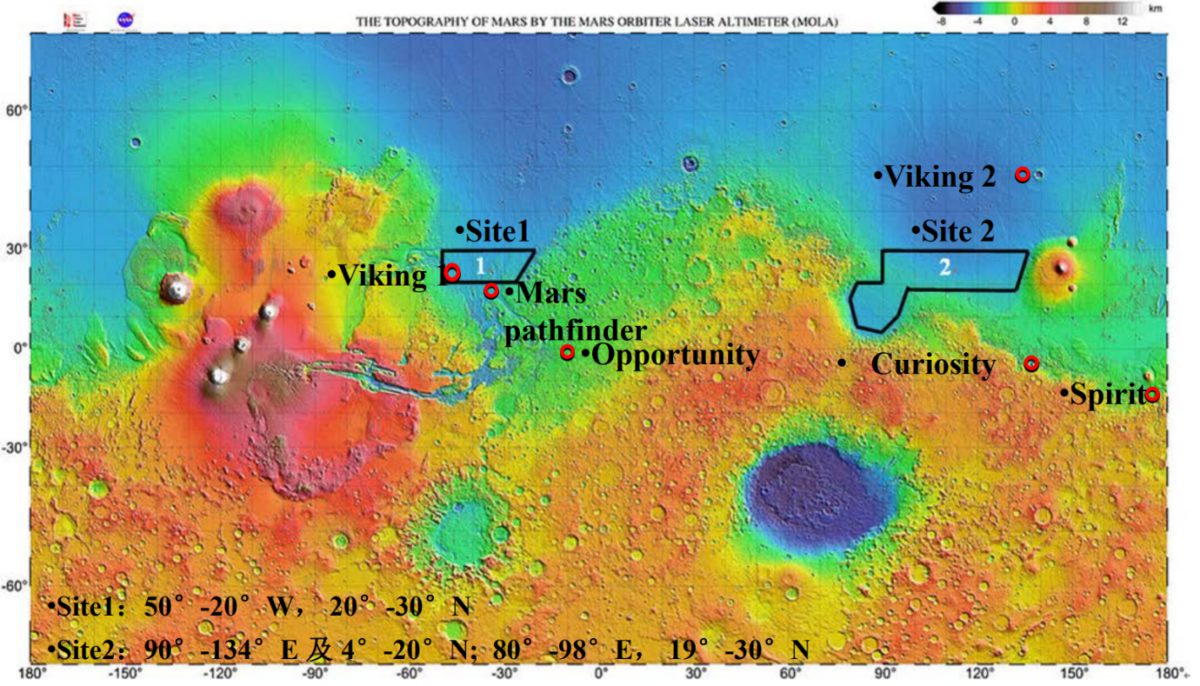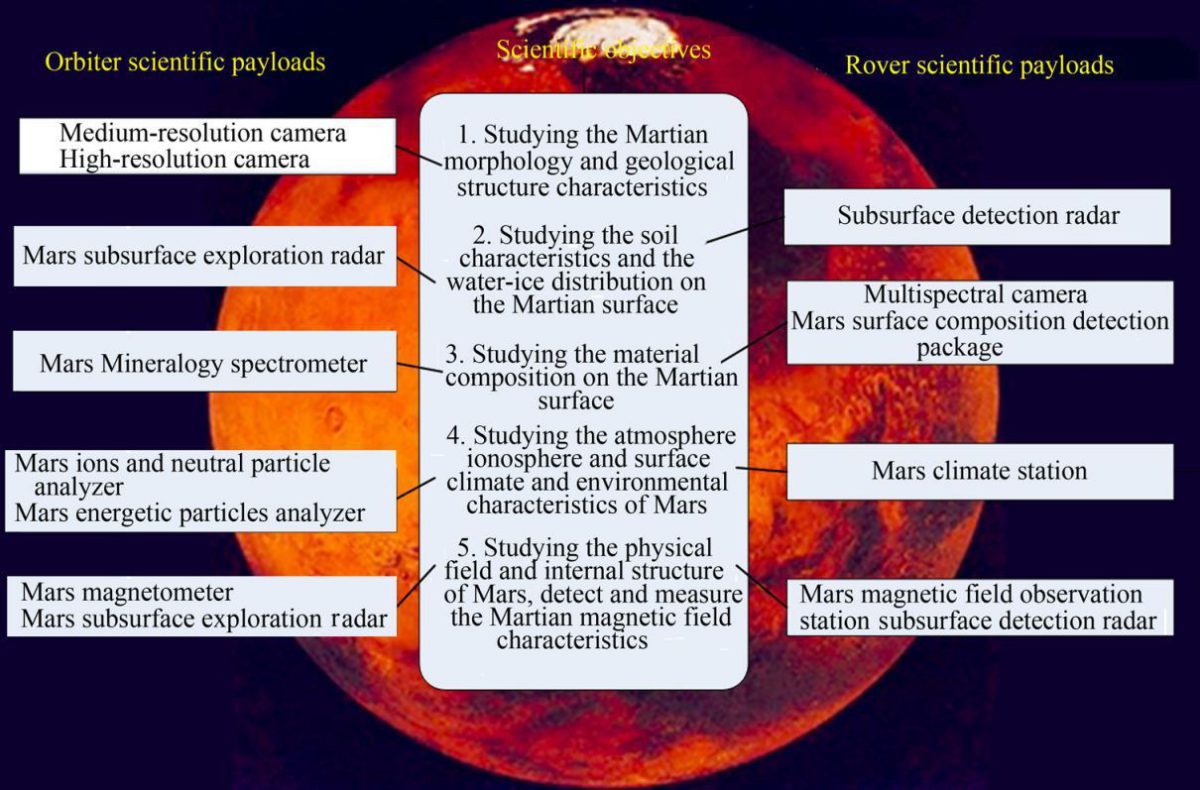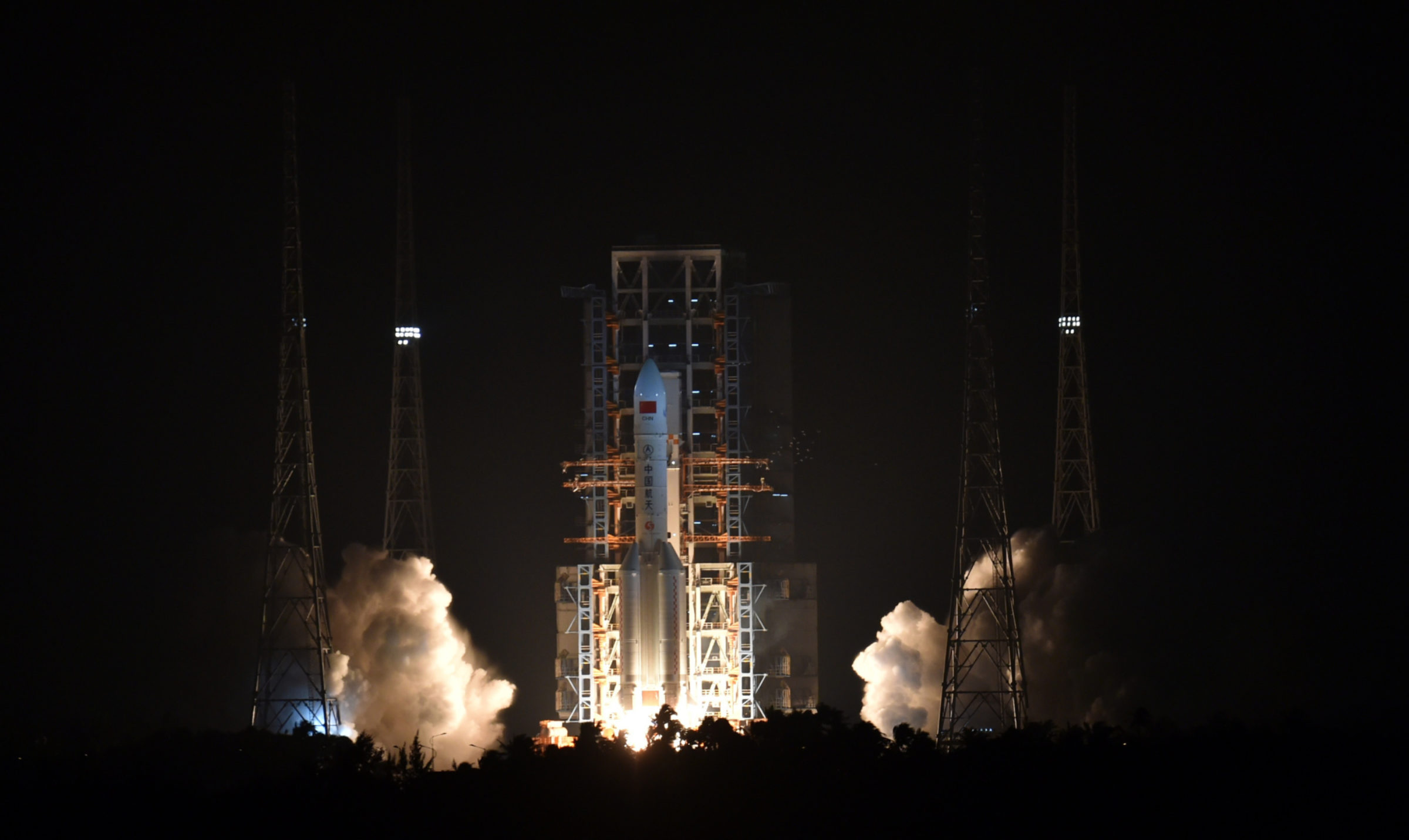Andrew Jones • Nov 21, 2018
Here's where China is looking to land its 2020 Mars rover
China has selected two preliminary areas on Mars for what will be the country’s first landing attempt at landing on another planet, to take place in early 2021.
The mission ambitiously involves a combined orbiter and rover and is set to launch in summer 2020 with a fleet of vehicles from other nations that includes NASA’s Mars 2020 rover, the United Arab Emirates’ Hope Mars Mission and ExoMars 2020.
The colorized topographic map showing two candidate areas is based on data from the Mars Orbiter Laser Altimeter (MOLA), an instrument on NASA’s Mars Global Surveyor (MGS) spacecraft launched in 1996.
The first area targets Chryse Planitia, close to the landing sites of Viking 1 and Pathfinder, while the second covers Isidis Planitia and stretches to the western edge of the Elysium Mons region. The final landing site has yet to be selected, with several teams likely involved in providing candidate sites—a process similar to China’s lunar missions.

The map recently appeared in a presentation at the United Nations Committee on the Peaceful Uses of Outer Space (COPUOS) in June, and again in a presentation by mission engineers at the International Astronautical Congress (IAC) in Germany last month.
As this is China’s first independent interplanetary mission, teams will need to succeed on a range of technological challenges including orbital insertion and landing. The country recently made progress on that front with successful supersonic parachute tests and tests of a subsurface detection radar from a hot air balloon in October (link in Chinese).
Chinese media reports from early September said Tianying-6 sounding rockets were launched in western China to send a full-scale supersonic parachute to altitudes between 44 and 54 kilometers, simulating travel through the tenuous Martian atmosphere. The reports state the parachute opened successfully, providing valuable aerodynamic data and verifying subsystems. Similar tests were carried out by NASA on 7 September 2018 from Wallops Island, Virginia, for its own 2020 rover mission.
First Mars EDL attempt
According to a paper by a team from the China Academy of Space Technology (CAST) presented at the Global Space Exploration Conference in Beijing in 2017, landing site selection has been a complex process in which flight system engineering constraints are balanced against science goals while still allowing the project's science objectives to be met.
The two demarcated areas are in relatively low-lying regions which offer advantages to first-time Mars entry, descent and landing (EDL) attempts, says Mason Peck, an associate professor at Cornell University and former NASA chief technologist.
“The atmosphere of Mars is really inconvenient. It’s too thick to ignore—so, aerothermal heating is important—but too rarefied to offer an easy descent by parachute. So, the lower the elevation, the more atmosphere the spacecraft encounters on its way to the surface, and, therefore, it can decelerate more easily,” Peck says. “If one is unsure of one’s decelerator technology, this is the best-odds approach.”
The landing will involve the use of blunt body aerodynamics, deployment of a supersonic parachute and powered descent to safely set the rover down on Mars. Part of the team that developed the Chang’e-3 lunar lander and rover, which successfully soft-landed on the Moon’s Mare Imbrium region in late 2013, is working on the mission, though Mars presents different and greater challenges: notably remoteness, more gravity, the presence of a thin atmosphere and less solar energy reaching the planet.
“It’s all very hard,” says Peck. “The smallest errors in orbit maneuvers or failure to correctly model the atmosphere can have catastrophic consequences.” To date, about half of Mars missions have failed, although NASA has a very good track record.
“The EDL sequence carries a lot of risk. Many technologies have to perform perfectly, for the first time: the aeroshell/heat shield, the aerodynamic decelerator (or parachute(s)), position and velocity measurement relative to the ground, and the landing subsystem,” Peck says. “Getting any one of these right is a remarkable technical achievement. Getting these all right is what’s necessary to land on Mars.”
Peck notes that NASA’s science data—including atmosphere measurements—is openly available, allowing others to benefit from agency successes that go all the way back to the Viking landers in the 1970s.
According to a document seen by your correspondent, the landing ellipses—the areas in which the spacecraft is statistically likely to land—for China’s Mars mission will be around 100-by-20 kilometers, making it comparable to those for the joint ESA-Roscosmos ExoMars missions and NASA Mars Exploration Rovers, but considerably larger than the 20-by-7 kilometer landing footprint used by Curiosity in 2012.
“They’ve picked candidate sites that are pretty safe in terms of landing site hazards: Flat, broad areas, good for a first round of trying to land a rover on Mars,” says Dr. Tanya Harrison, a planetary scientist and director of research for Arizona State University's Space Technology and Science Initiative.
The 240 kilogram solar-powered rover is twice the mass of China’s lunar rovers and, according to academic papers authored by key figures involved in Chinese space exploration missions, slated to carry six payloads. These are a navigation and topography camera, a multispectral camera, a subsurface detection radar, a laser-induced breakdown spectroscopy instrument similar to Curiosity’s LIBS instrument, a Martian surface magnetic field detector, and a Mars climate detector.

Commenting on the selected areas, Harrison says: “Area number one is good for studying deposits from the massive outflow channels that empty into the Chryse basin, like Pathfinder and Sojourner. Site number two is good to study Elysium volcanism or Isidis basin deposits, depending on where in that area they land.”
The orbiter and lander mission may opt for a landing from orbit, a couple of months after Mars orbit insertion, rather than a more energetic landing from approach. The rover is to have a design life of at least 90 days on Mars.
Orbiter, autonomous control, mission timeline
The orbiter will meanwhile be carrying seven payloads, including medium and high-resolution cameras (with the latter similar in capabilities to NASA's HiRISE), an ion and neutral particle analyzer, a magnetometer, subsurface detection radar, a mineral spectrum detector and an energetic particle analyzer. The instruments will be variously used for stated science goals of analysis of the Martian ionosphere and interplanetary environment, investigating the type, distribution and structure of Martian soil and the topographic characteristics of Mars.[JD1] [JA2] The subsurface detection radar will, in particular, be used to detect water and ice on the Martian surface and below.
Due to the remoteness of Mars, which ranges from between 54.6 million to 401 million kilometers from Earth, and subsequent telecommunication delays, China is developing autonomous control technology for both the orbiter and rover.
The mission will launch on a Long March 5 heavy lift rocket from the coastal Wenchang Satellite Launch Center in July or August 2020. Crucially, the Long March 5 will have a return-to-flight in early 2019, following the launch failure of second flight in July 2017, which prompted a redesign of the first stage engines. A nominal flight is also needed for China to move ahead with a delayed lunar sample return mission, Chang’e-5, in late 2019.

In 2011 China had an orbiter named Yinghuo-1 piggyback on the Russian Fobos-Grunt sample return mission. But an issue with the Zenit-2M rocket meant neither spacecraft left Earth orbit and reentered over the Pacific Ocean in early 2012.
According to China’s interplanetary exploration roadmap, its 2020 mission is to be followed by an ambitious Mars sample return, slated for launch around 2028 following development of a super-heavy-lift launcher, the Long March 9.
Support our core enterprises
Your support powers our mission to explore worlds, find life, and defend Earth. You make all the difference when you make a gift. Give today!
Donate

 Explore Worlds
Explore Worlds Find Life
Find Life Defend Earth
Defend Earth


